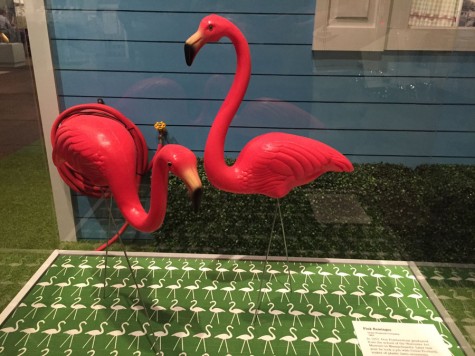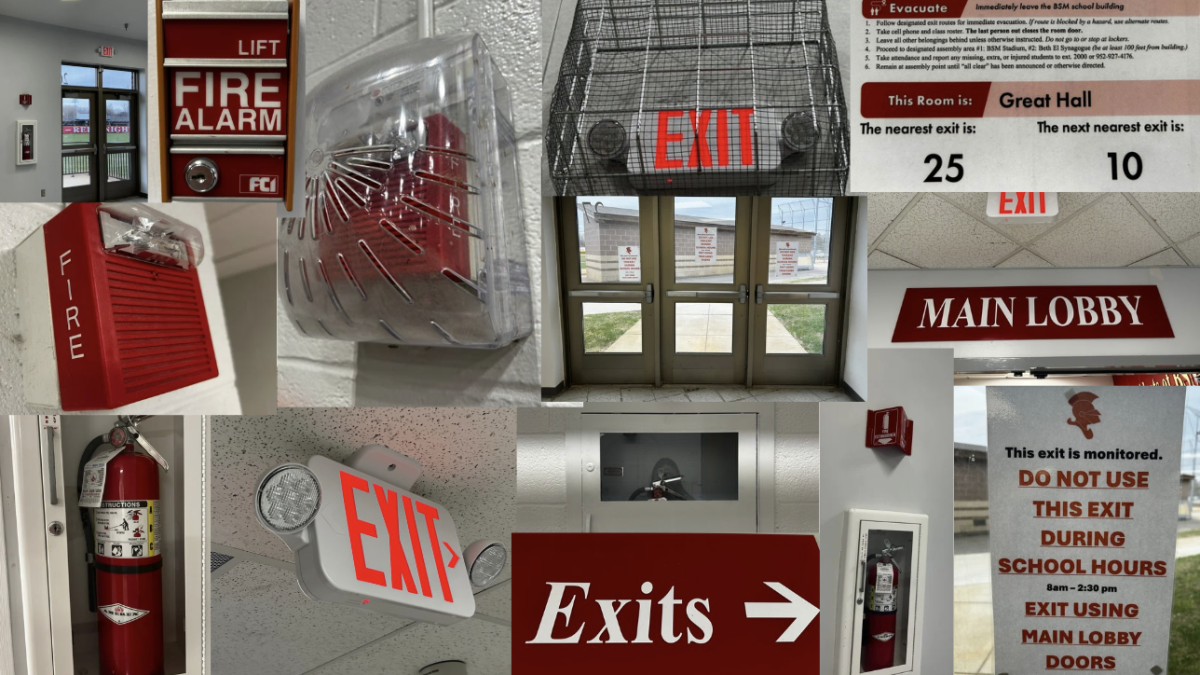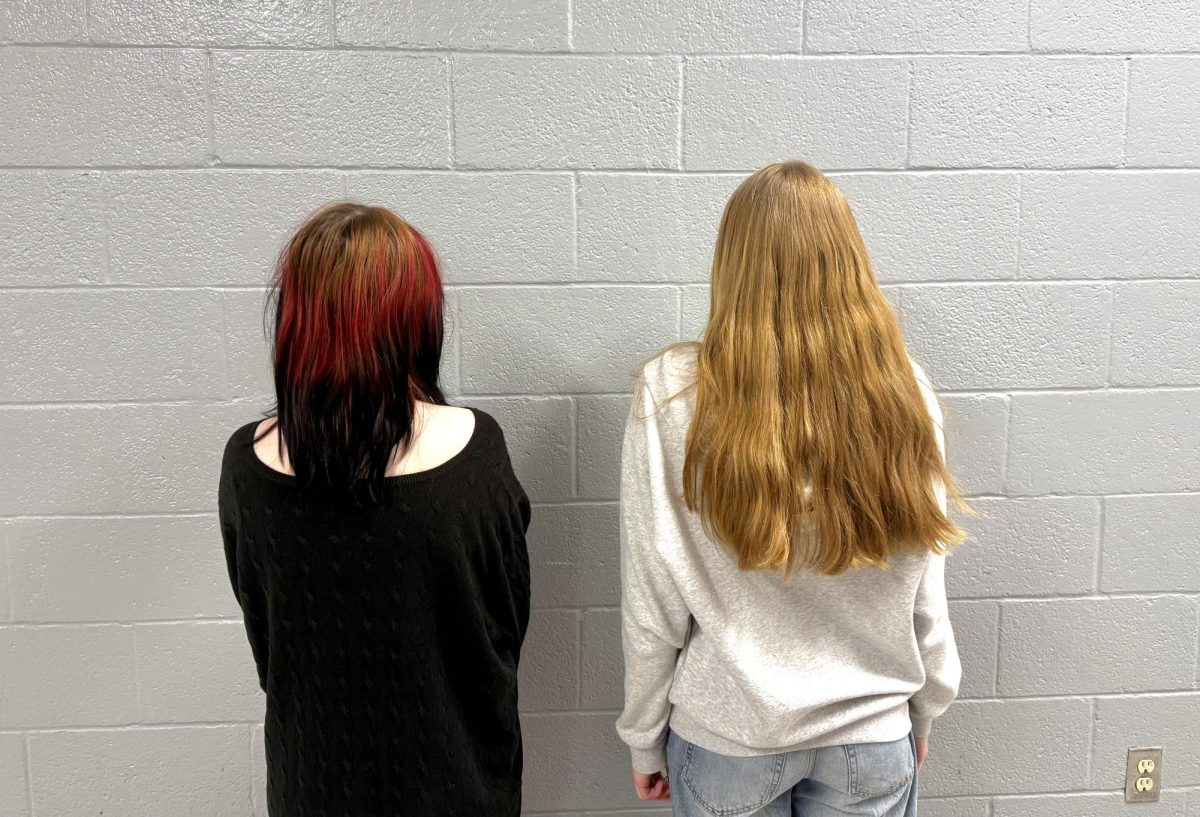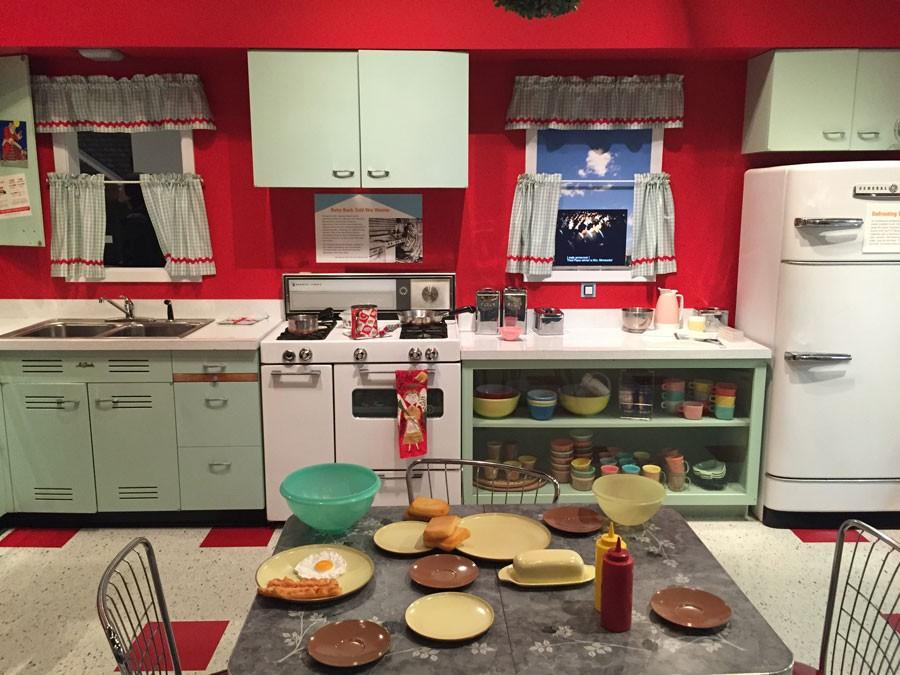“Suburbia” exhibit currently open at Minnesota History Center
The kitchen display, part of the Living in Suburbia portion of the exhibit, showcases many of the appliances that helped change Suburbia forever such as the toaster, and also discusses the new desire for efficiency in the kitchen.
Several displays and interactive moments in the new exhibit “Suburbia” currently at the Minnesota History Center make the otherwise bland exhibit come to life. Visitors won’t experience anything wildly insightful or eye-opening, but the exhibit will definitely make them think about Minnesota’s suburbs on a far deeper level than ever before.
The exhibit highlights three main aspects of Suburbia including: “Building Suburbia,” “Living in Suburbia,” and “Shopping in Suburbia.” Each aspect had its own faults and its own successes.

Pink flamingos were a staple during the growth of suburban Minnesota.
For example, a substantial portion of “Building Suburbia” was about the boring construction it took to build Suburbia (fault), but it also showcased the experience of people of color living in Suburbia in the mid-1900’s (success).
“Living in Suburbia” had different settings like the kitchen, living room, baby’s room, and backyard. The only new information I gathered about “Living in Suburbia” was that basically everyone played the card game Bridge and that the toaster wouldn’t have risen to its current popularity without the invention of Pop-Tarts.
Every successful history exhibit needs to be interactive and engaging, and can’t put the visitors through too much reading or else it is destined to fail. “Suburbia” did indeed integrate a few isolated interactive moments into the exhibit, and they were by far some of the highlights.
In the “Shopping in Suburbia” portion of the exhibit, there was a table with a touch screen on it that displayed icons of the different malls that came around as the suburbs grew. Simply choose a Twin Cities mall and drag a dot along the timeline at the bottom of the screen and watch an aerial map of the area develop from the 1930’s to today.
Seeing the humble beginnings of malls like Southdale and the Mall of America really helps visualize the suburban growth in Minnesota. As a child of the technological era, I’m a sucker for touch-screen tables that teach me the history of malls.
Another highlight of the exhibit is located right by the entrance to the exhibit, and consists of a large map of the Twin Cities area in the early to mid-1900’s. The map shows suburban neighborhoods that were “the best,” favored, industrial, or undeveloped along with costs associated with each. It really put Minnesota’s suburbs into perspective of how small the metro area used to be and the prices of certain neighborhoods back then compared to today.
One of the most interesting parts of the exhibit came near the end where a poster featured several millenials’ opinions on Suburbia from around the country. A large majority of millenials were against the suburbs for reasons that ranged from a lack of culture in the suburbs to general disinterest.
All things considered, my favorite part of the exhibit had to be a game in the exhibit very similar to the game concentration, but instead with cars and animals. It was a win-win because while I did walk away with a better understanding of Minnesota’s suburbs, I also got to walk away with a victory that I could hold over my friend for the day.




































![Teacher Lore: Mr. Hillman [Podcast]](https://bsmknighterrant.org/wp-content/uploads/2025/03/teacherlorelogo-1200x685.png)





